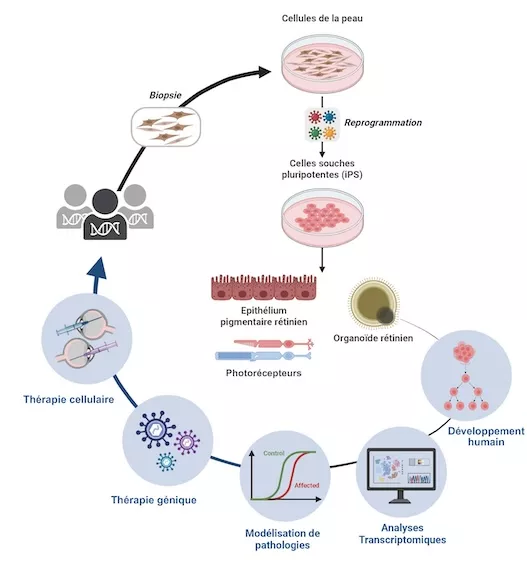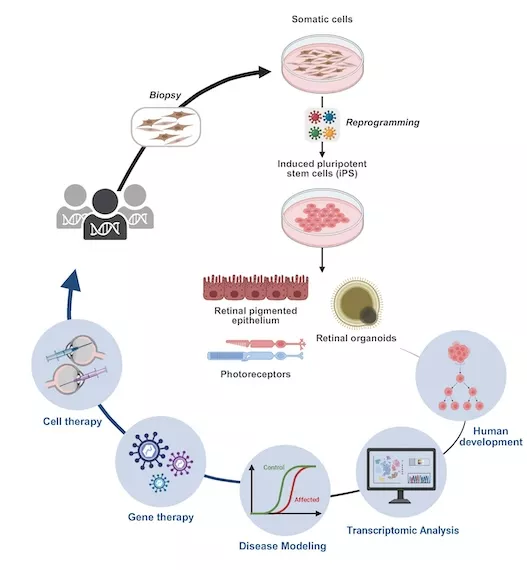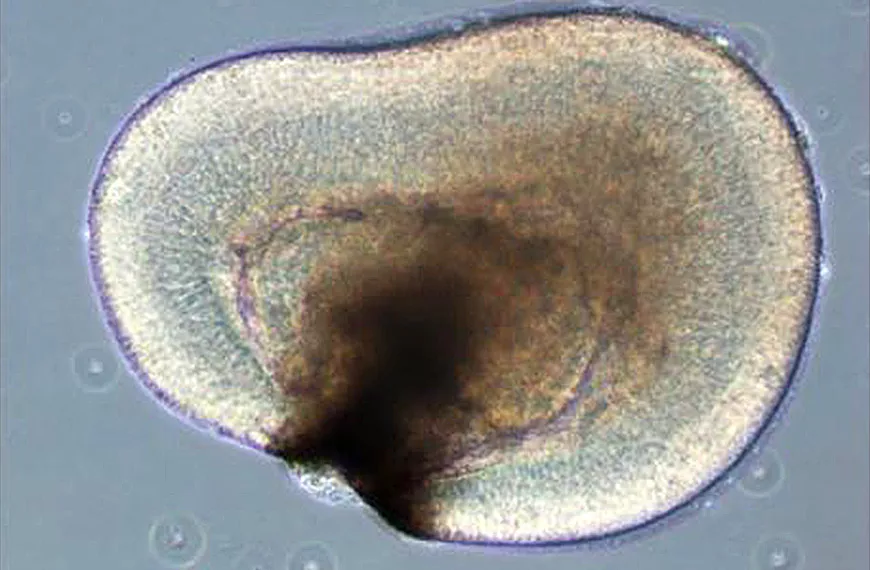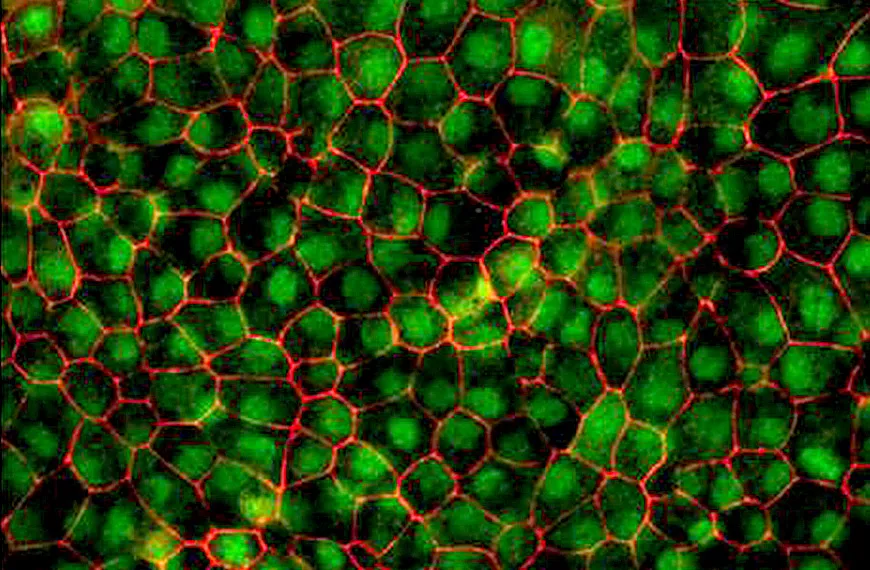Retinal development and repair
We use human induced pluripotent stem cells (iPSCs) as a tool to deepen our understanding of human retinal development and its pathologies, as well as to design novel therapeutic strategies, including cell therapy in regenerative medicine, the evaluation of gene therapy approaches, and pharmacological screening.
Presentation
Induced pluripotent stem cells (iPSCs) represent a powerful tool to advance our understanding of human retinal pathophysiology. Recent progress in developmental biology, largely derived from animal models combined with refined protocols for controlled differentiation, now enables the generation of three-dimensional structures that recapitulate the cellular organization of native organs. These retinal organoids, true avatars of the human retina, contain multiple cell types arranged in a manner comparable to the tissue in vivo, thereby acquiring some of its functional properties.
Our team has developed efficient protocols to differentiate human iPSCs into retinal cells and organoids. We use these models, which closely mimic retinogenesis, to investigate the cellular and molecular mechanisms underlying human retinal development and to generate retinal cells and tissues for potential applications in cell therapy. We are also working on producing more complex organoids by incorporating immune cells and vascular networks through innovative bioengineering approaches.
Retinal organoids derived from patient-specific iPSCs carrying mutations responsible for inherited retinal dystrophies allow in vitro modeling of these degenerative diseases. They make it possible to study the mechanisms leading to retinal cell loss, particularly of photoreceptors, and to evaluate novel therapeutic strategies, including gene therapy with adeno-associated virus (AAV) vectors and genome-editing approaches based on CRISPR/Cas9.





Research areas
- Pluripotent stem cells
- Organoids
- Cell therapy
- Disease Modeling
Team members
Scientific publications
Below you will find the latest scientific publications in this field: Retinal development and repair.












